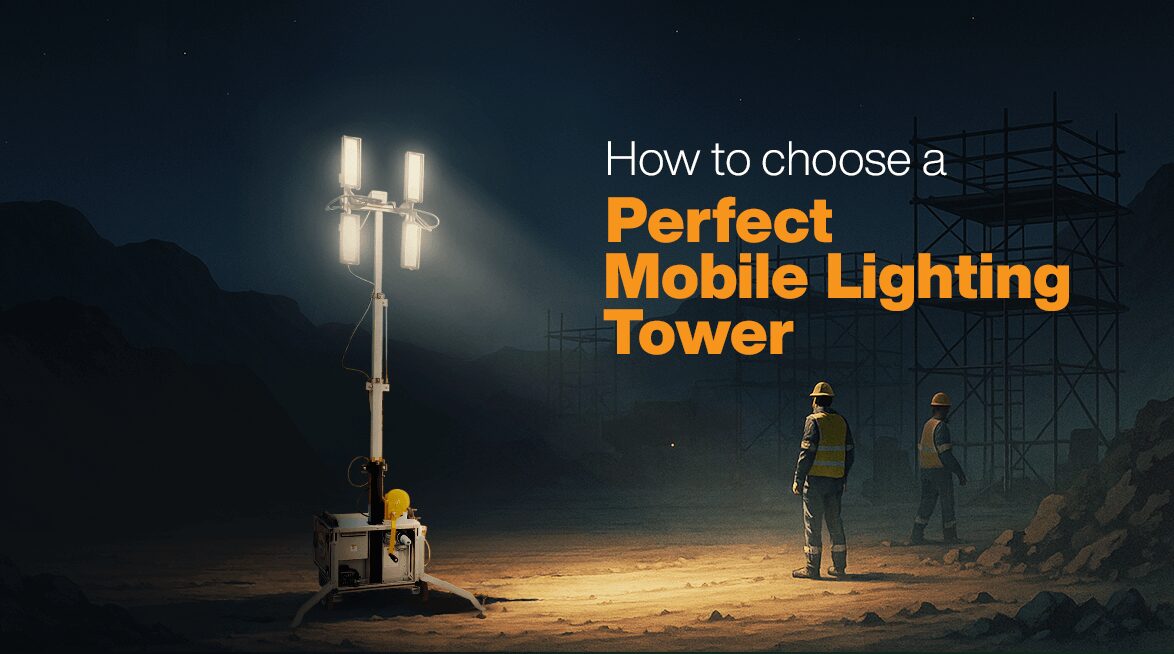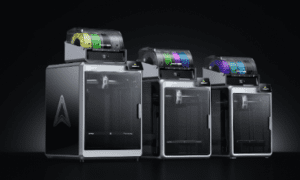Whether you are managing a construction site or mining site, conducting an outdoor event, or handling any emergency scenarios, mobile lighting towers become necessary in providing visibility, productivity, and safety that occur in low-light environments.
A right mobile lighting tower is a boon as it can basically handle any low-light situation in almost every area, such as infrastructure, mining, oil & gas, construction, and many more. However, with available different models and technology, an appropriate lighting tower may become a challenging task to select.
In this blog, let’s explore different ways to choose the best mobile lighting tower for your distinct needs.
Key Tips to Select the Best Mobile Lighting Towers
#1 Understand Your Power Source Requirements
The main question that needs to be asked first is what kind of power source would best serve your project:
Engine-Powered Lighting Towers are perfect in areas that do not have grid connections. Off-the-shelf products that fit into this category include compact engine-powered models that operate in rugged construction and mining environments in India, with telescopic masts and fuel-efficient diesel engines.
Olikara’s (a reputed mobile light tower suppliers) mini model, the Qube Power Mini, is effective in such rugged terrains because it has a reduced ground profile and exceptional fuel economy when regular repositioning is required.
Grid-Powered Towers are an outstanding choice when it comes to energy efficiency of semi-permanent installations such as infrastructural facilities or logistic yards accessible to a local grid.
As an example, an elevated structure such as the one called Qube Grid based on a trailer setup can relocate easily, powering continuously without the need for fuel.
Solar Tower or Hybrid Tower is a green alternative to industries trying to mitigate carbon emissions and fuel expenditure. These towers are integrating solar panels with engine backup or battery.
A hybrid system that is already in operation, somewhat similar to the “Qube Power Max Hybrid”, combines solar charging with high-power LED stacks, thus making it suitable for an operation that uses renewable energy as a mine operator.
#2 Evaluate the Output of Illumination and Coverage Area
Every project site demands different intensities of light, as well as beam coverage:
- The Construction Sites usually need larger beam coverage over large areas of operation.
- Event Venues can give more thought to ambience-creating light that is less harsh and hard, and more intense around a particular area.
- Disaster or Emergency relief operations require high-lumen rapid deployment towers to help perform rescue missions.
The high-performance version of the model, e.g., Qube Power Max, has the additional floodlights with adjustability and maximum height of 8 meters of the mast–this model will suit illuminating surfaces of up to 7500 sq.m.
You can check lumen output, LED wattage, and beam spread angle to be sure there is no over-lighting or blind spot, and ensure adequate visibility.
#3 Take Portability, Ease of Deployment into Consideration
A mobile light tower must be easy to deliver, deploy, and move. Look for:
- Small trailers or towable bases
- Manual mast or hydraulic mast
- Masts that can be turned appropriately and adjusted lights
- Collapsible designs or folds to store maximally efficiently
- Trailers that have rugged wheels and are able to be implemented within hours.
#4 Check the Fuel Efficiency and Runtime
Run-time directly impacts the efficiency of operations, also in remote areas. The diesel-propelled units that have long fuel tanks can last more than 50 hours without refuelling. Hybrid systems produce maximum efficiency through swapping power between solar, battery, and engine.
There exists a diesel-driven unit Qube Power from Olikara, a trusted mobile light tower manufacturers, which provides around 65 hours of continuous functioning with one tank-just perfect when you have to go to the remote mining regions with the complexities of fuel transport.
| The global mobile lighting tower market currently, according to statistics, is worth approximately USD 5.45 billion (2023), and it is experiencing a boom (7.24% CAGR), due to their increased popularity in the mining, infrastructure, and construction industries. The market has been driven around USD 10.22 billion in 2032 due to the increasing safety norms, night-time contracting, disaster preparedness, and sustainability, and towers with a hybrid and LED base have a quality acceptance regionally. |
#5 Ensure Compliance with Environmental and Noise Regulations
As society becomes more environmentally and regulatory conscious, low-noise and low-emission solutions are increasingly becoming the desired requirement in many job sites. Hybrid or solar-powered models offer quiet working, which is viable where the construction is residential or has to be conducted at night.
Hybrid lighting towers are deployed in the maintenance yards of the railway, and the silent, emission-free light source is a necessary component in areas close to residential houses.
#6 Match the Tower with Application Specific Requirements
In every industry, there are different challenges:
- Mining: Sturdy towers with good illumination, heavy-duty tyres and self-driving capacity
- Events: Silent, small-sized towers with elegant light illumination
- Railways: There will be no intrusive lights, supplying and maintaining battery/solar-powered and capable of easy towing.
- Disaster Relief: Towers that are easy to erect and take up little maintenance requirements and weight
Thus, choose the mobile light tower that meets your specific requirements.
Conclusion
Finding the best mobile light tower does not only mean selecting the brightest one, but it also includes choosing the appropriate combination of power, portability, sustainability, and durability that fits your on-site requirements. As more and more diesel, grid, and hybrid-powered towers became available, you can now choose the best solution based on light requirements without compromising the performance and environmental responsibility.
With Olikara Lighting Towers, your trusted mobile light tower manufacturers, whether it is a fuel-efficient engine model or solar-hybrid system designed to meet the requirements of the Indian rugged terrains and regulatory requirements, there is an appropriate tower that will satisfy all these different types of needs.
Make the right choice, go with innovation, efficiency, and adaptability in the lighting tower you select.
| Want to know more about different mobile light towers that suit your industry?
Contact now! |
FAQs
- Which should be the most suitable power supply to a mobile light tower in remote places?
Since the remote locations might not have power grids, engine-based or hybrid lighting towers are a perfect solution and provide longstanding performance with a high degree of dependability.
- What is the coverage of a regular lighting tower?
Given model-dependent mast height and LED layout, a lighting tower could have a range of an illuminated area between 2,000 square meters to more than 6,000 square meters.
- Do solar-powered lighting towers work in cloudy days?
Yes, the battery storage with engine backup is generally embedded with solar-powered or hybrid towers so as to provide continuous lighting in the presence of scanty sunlight.
- Which are the safety features I should expect with a lighting tower?
The important characteristics are hydraulic mast locks, emergency stop buttons, auto shut-off system, and electrical weatherproof enclosures to operate in harsh climatic conditions.





























